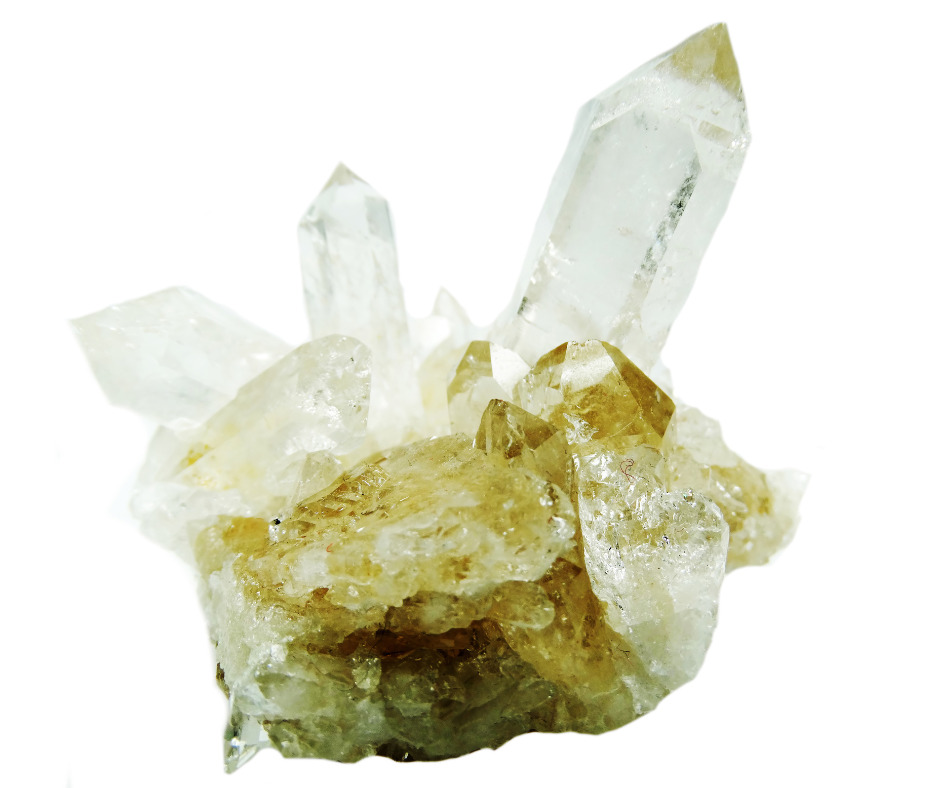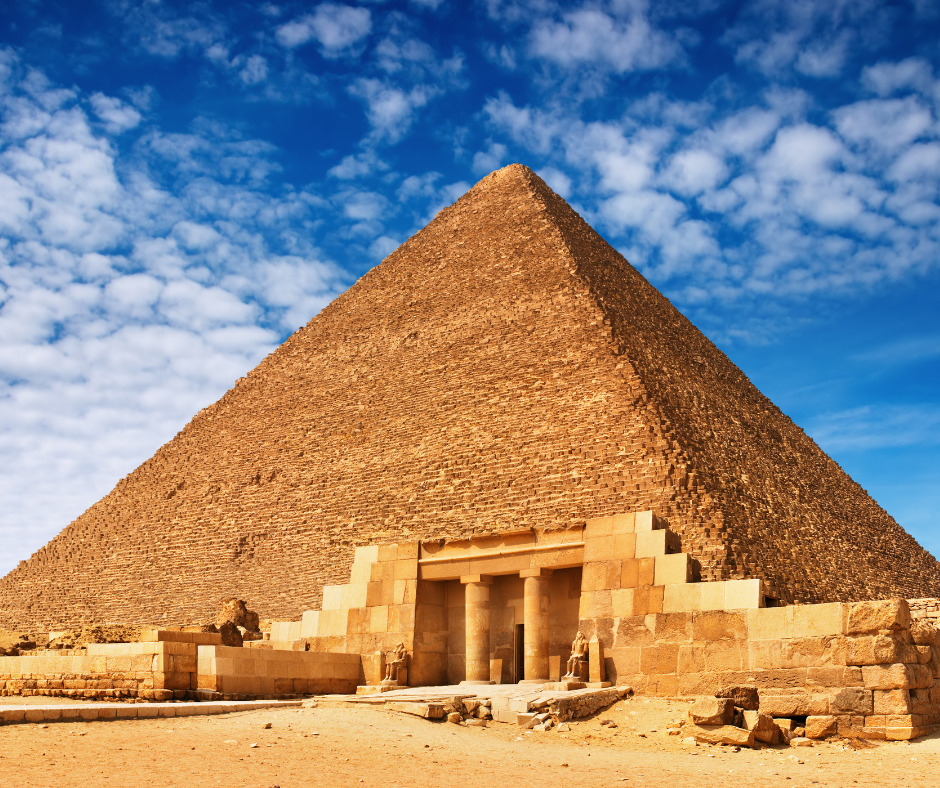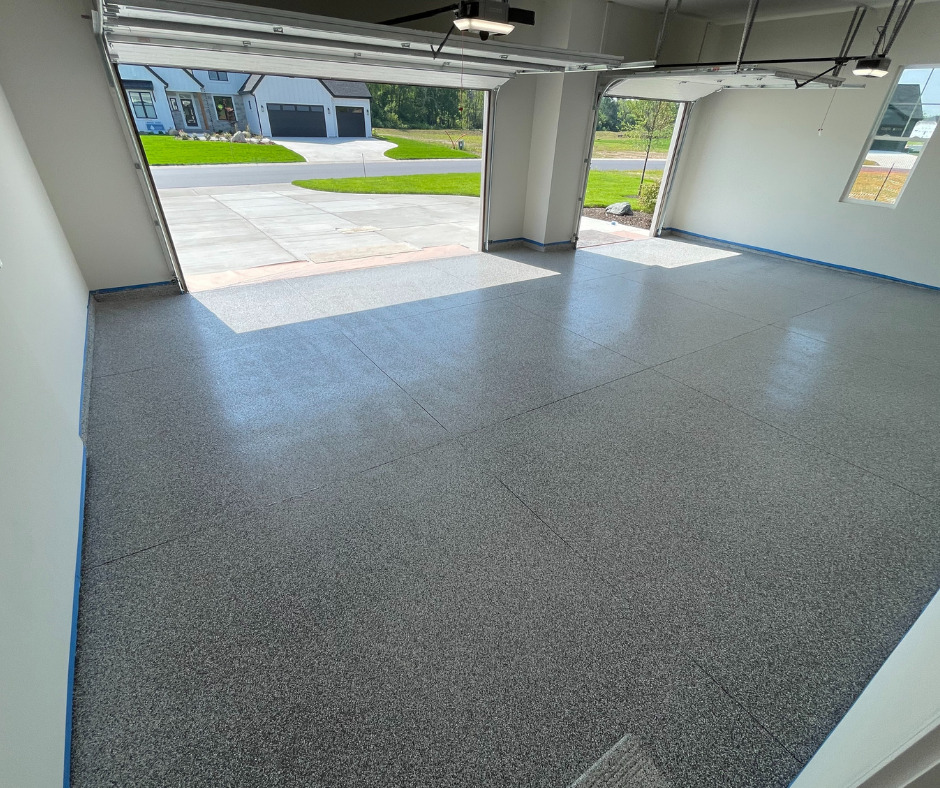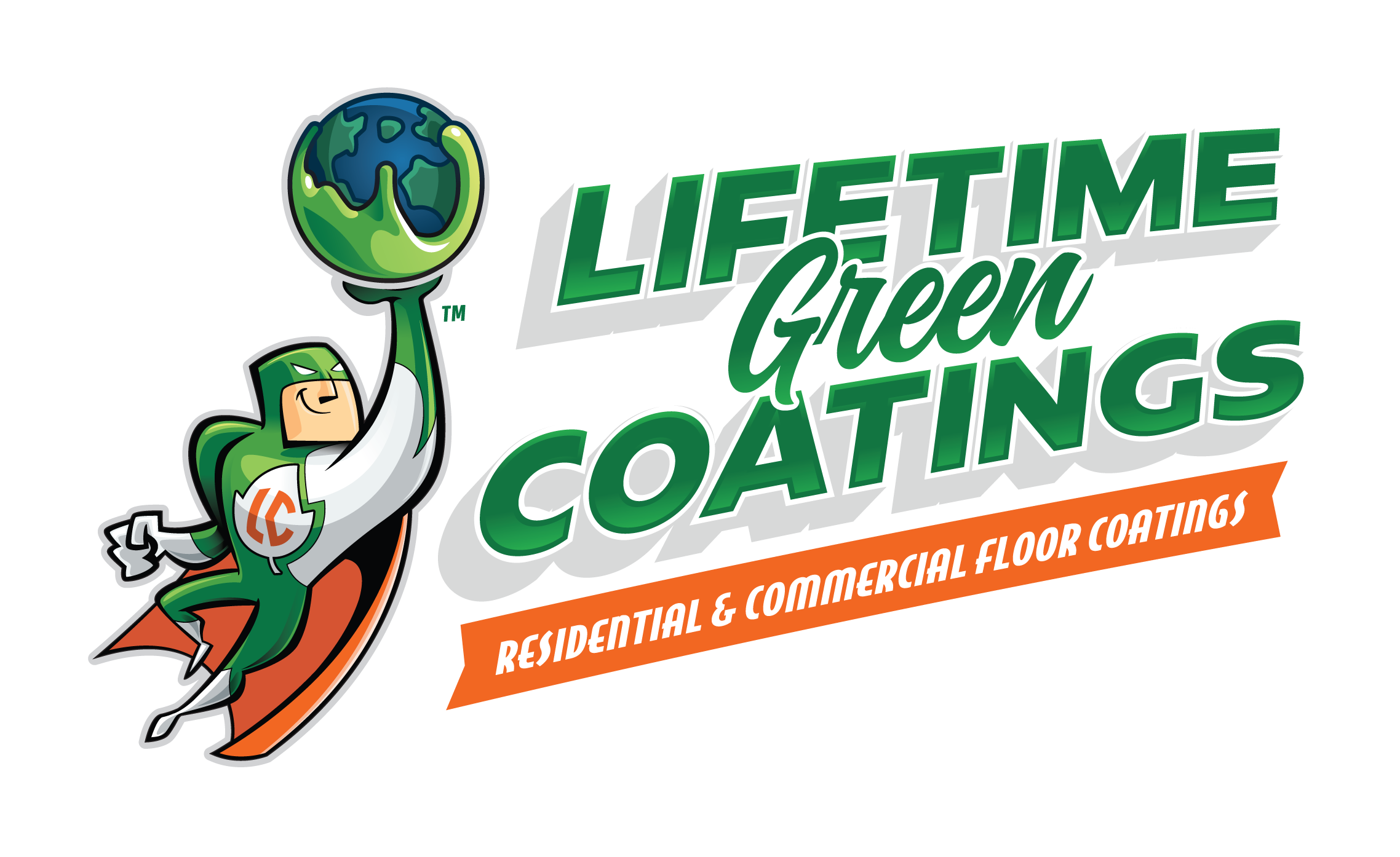
Eco-Friendly Floor Coating Solutions for Homes and Businesses
What is Gypsum?
Although lesser known than quartz, talc, and iron ore, gypsum is a powerhouse in the mineral world. Composed of calcium sulfate dihydrate, gypsum can easily be found in deposits across the globe. The widespread occurrence of this soft rock, as well as its unique properties and versatile nature, has allowed humans throughout history to incorporate gypsum uses in a wide variety of industries and applications. As a primary building material throughout human history, gypsum continues to shape our world today.

Gypsum forms as crystals. It often is white or yellow-tinted, but can take on other colors with imperfections. When processed, it becomes a fine white powder that’s easily incorporated into various products.
Production of Gypsum
Gypsum, also known as selenite, satin spar, and alabaster, can be found both in nature and as a chemical by-product. It occurs naturally through the slow evaporation of mineral-rich water bodies, forming stunning crystals and deposits. This process often occurs in lake and sea water, as well as hot springs and volcanic vapors. Occasionally, gypsum will occur naturally as sand. White Sands National Park in New Mexico is one such example of gypsum sand. More recently, gypsum has been produced in mass quantities as a by-product of many industrial processes, such as the production of phosphoric acid and flue gas desulfurization in power plants.
Astoundingly, gypsum is not confined to just our planet. The NASA rover Opportunity confirmed dunes in the northern polar region of Mars are composed of gypsum. Out of 6,000 minerals found on Earth, gypsum is one of only 161 confirmed to also exist on Mars.
Properties of Gypsum
Gypsum is renowned for its distinctive physical characteristics, including its translucent to opaque appearance and its remarkable ability to dissolve in water. It is often mined in rock form but can be processed into powder or other materials easily used in construction and other industries. This versatility allows gypsum to be used in a wide range of applications.
Additionally, gypsum naturally offers several unique properties that humans have been able to take advantage of for thousands of years.
- Fire Resistance: Gypsum’s natural water content provides it with a unique fire-resistant quality, making it a preferred choice for coating walls as a safety measure.
- Insulative Properties: Gypsum boasts low heat conductivity, which naturally provides a measure of insulation against extreme temperatures.
- Soil Enhancer: Gypsum acts as a natural fertilizer, providing soil with calcium and sulfur without affecting its pH. It works as an excellent soil amendment to improve structure and promote healthy plant growth by helping roots penetrate compacted soils.
- Sound Proofing: Gypsum absorbs sound, making it perfect for soundproofing.
- Soft Rock: Gypsum is a soft mineral, making it easy for ancient and modern people to cut and carve into it.
Historic Gypsum Uses
Gypsum in Ancient Civilizations
Gypsum in Ancient Civilizations</h3> Gypsum usage can be traced back to 7000 BCE where it is found in the remnants of Mesopotamian cities found along the Euphrates and Tigris rivers in the Middle East. Mesopotamian peoples seem to have used gypsum in their homes, lining walls with gypsum powder to act as a fire retardant, as well as using gypsum stone in the construction of city walls.

Ancient Egyptians constructed their pyramids and other structures with gypsum uses.
5000 years or so later, Ancient Egyptians learned that gypsum could be ground up and added to water to form a plaster that was then used to build the pyramids, palaces, and other structures. Egyptians found many uses for gypsum, with examples spanning the construction of the pyramids in the Bronze Age all the way down to Cleopatra who ruled Egypt from 51-30 BCE. Legends persist that Cleopatra had a very special cup made of gypsum.
The soft rock, known as Egyptian Alabaster, was often carved into busts or statues, as well as utensils like cups and dishes. Some of these artifacts and structures survive today as a testament to gypsum’s durability.
Ancient Romans used gypsum in their burials, covering their dead in liquid gypsum before placing the body in its tomb. The translucent nature of gypsum also allowed Ancient Romans and Ancient Greeks to use large, thin slices of gypsum crystal to create windows.
Gypsum in the Middle Ages
During the Middle Ages in Europe, gypsum played a pivotal role in architectural marvels, including the construction of stunning cathedrals and castles. Its malleability and durability made it an essential material for intricate stucco work. Monks and scribes mixed the mineral with lead carbonate to make gesso, a type of primer, used to create illuminated manuscripts and frescoes.
“Plaster of Paris,” a well-known gypsum-based plaster made from abundant gypsum deposits outside of Paris, France, became a staple for medieval buildings when King Henry II of France began to decorate his palace with the mixture. The plaster molds easily, allowing for more intricate and ornate designs.
In Persia, during this same time, gypsum began to be used as an ingredient for toothpaste and other personal care products.
Gypsum in the Industrial Revolution and Beyond
The 18th century witnessed gypsum’s transition from primarily an artistic and construction material to an agricultural one. German agriculturalist Johann Friedrich Mayer was the first to use gypsum as a fertilizer, discovering its benefits in improving soil structure and crop yields. Spreading quickly around the world, farmers considered gypsum to be a wondrous–almost miraculous–resource for enhancing <strong>organic matter</strong> decomposition and improving soil structure.
Benjamin Franklin was one of the first Americans to utilize gypsum for farming. Gypsum would soon take off in the region and go on to pay a vital role in the agricultural boom that followed. Also during this time, gypsum powder was used to coat the interior walls of log cabins as a fire safety measure, much like the Mesopotamians thousands of years earlier.
During this time, Nova Scotia began producing gypsum, relying on large deposits in the region. Farmers in North America were so desperate for the mineral that a robust blackmarket gypsum industry developed between the United States and Canada. The “Plaster War of 1820” refers to a set of skirmishes between Nova Scotian smugglers, called Plastermen, and the Canadian government. North America contains much gypsum, with significant deposits found throughout the continent that continue to supply various industries today.

Shortly after, in England, gypsum was vital to the development of Portland cement. Portland cement is a cornerstone of modern construction, allowing for precise control over setting times and enhancing the durability of concrete structures.
Uses of Gypsum Today
Gypsum usage has only expanded over the years. Today, gypsum is a vital component of several industries:
- Farming: Today, gypsum continues to enhance agriculture by improving soil structure, reducing soil erosion, and providing essential nutrients to plants. It remains a valuable tool for sustainable farming practices. Farmers apply gypsum as a soil amendment to increase water infiltration and enhance plant growth by making nutrients more available.
- Personal Care and Medical: Gypsum’s applications extend to personal care products and medical settings. It is used in dental plaster, orthopedic casts, and pharmaceuticals.
- Recreational: Gypsum even finds its way into recreational facilities, such as tennis courts and sports fields, where it acts as a binder with clay and other materials to enhance surface durability and performance.
- Construction: In the construction industry, gypsum is a nearly universal building material for drywall, plaster, and acoustic ceiling tiles. Its fire resistance and sound-absorbing qualities make it indispensable in modern building practices.

Today, most plaster and drywall are made of gypsum.
Lifetime Green Coatings and Gypsum
Lifetime Green Coatings offers innovative floor coatings for garages, basements, driveways, walkways, patios, and more. Unlike traditional garage floor coatings that are made with epoxy and other harsh chemicals, Lifetime Green Coatings utilizes plasticized gypsum and naturally-occurring castor oil to create eco-friendly, long-lasting coatings.
With over 20 years of tested experience, Lifetime Green Coatings have withstood incredibly harsh environments, including the inside of oil tankards and industrial ship decks, as well as the daily wear and tear of agricultural production and processing facilities. Homebuilders across the United States use our product to waterproof shower spaces, while homeowners trust our coatings to protect their garages and driveways through extreme weather and daily use.
Through the use of gypsum, our product boasts many of the same features that made gypsum attractive to people who lived centuries ago. Lifetime Green Coatings boasts a Class “A” fire rating, lowering the risks of fires and making it easier to comply with building regulations. Additionally, our coatings offer an R6 insulating factor that keeps buildings properly warm and cold as needed, lowering energy usage and meeting industry-specific building codes. The flexible nature of our coating also offers added protection against shifting or expanding concrete below the surface, eliminating unsightly cracking.

Skilled Lifetime Green Coatings technicians apply our coating systems made of gypsum and castor oil.
Health Benefits
By using natural ingredients like gypsum and castor oil, Lifetime Green Coatings is able to eliminate VOCs (volatile organic compounds) that are present in other coating systems. VOCs evaporate into the air and cause a myriad of health issues when they come in contact with humans. Small children and pets, in particular, are extremely susceptible to health issues caused by VOCs.
Sustainability
Gypsum’s sustainability is increasingly vital in an environmentally conscious world. The mineral can be recycled, reducing waste in landfills. Sustainable mining practices also mitigate environmental impacts, while the abundance of gypsum in the USA lower transport emissions. Lifetime Green Coatings is proud to use ingredients that meet our mission of being environmental heroes.
The plasticized form of gypsum found in Lifetime Green Coatings will bond with itself even decades after first being laid. This property adds a level of sustainability as extreme impact damage is easily repaired without needing to remove the entire coating. Not only is this cost-saving, but it also reduces the amount of product needed and unnecessary waste.

A stunning garage transformation is completed with Lifetime Green Coatings.
Conclusion
Ultimately, gypsum’s fascinating history, exceptional attributes, and extensive utility have made a lasting impact on our world. From the construction of ancient wonders to modern homes and buildings, gypsum remains a crucial mineral in our world offering valuable contributions to various industries and enhancing our daily lives. At Lifetime Green Coatings, we take pride in upholding this enduring tradition, with a firm commitment to sustainability and providing long-lasting solutions for our valued clients and the environment.

